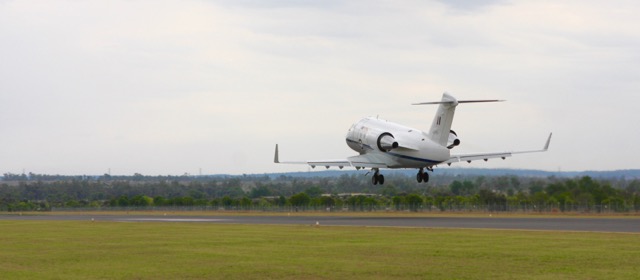
Posts about stuff relating to airports

Risk Evaluation Series
I have never really liked risk assessments that involve some vague calculation of consequence and likelihood. I have witnessed, and perhaps been involved in, many arguments about where to stick some potential or even past disaster into a limited matrix.
A couple of years ago, I had a whinge/thought experiment on an alternative method of risk evaluation. I enjoyed the use of the term Probability-Impact Graph, rather than Likelihood-Consequence Matrix, to create a little theme - see if you can guess what it was.
I’ve repackaged these posts and a follow-up post for renewed consumption below. Each image is actually a link to the post.

On the Shoulders of Giants
I can't rule out that I had already viewed this presentation and the words pathways and proximal became lodged in my mind - seeds sown to sprout some distant day in the future. But upon reading this document (again?) I was struck by the apparent similarities with my proposed risk evaluation methodology, which was the subject of much ranting a few weeks ago - here, here, here, here and here.
Find out what presentation by reading on…

Wrapping Up PIGs .... For Now
Since I don't just want to be thought of as some PIG-hating obsessive lunatic, lets wrap this thread up for the moment. Quick recap: The traditional likelihood-consequence matrix (PIG - see original post) is not particularly useful when dealing with aviation safety. Why? Because a graduated consequence scale fails to recognise the perilous nature of aviation and consequence as a dimension isn't particularly useful when evaluating latent conditions remote from the ultimate outcome (death by aviation).
Alternate approach: Instead of scoring the consequence directly, I've offered two alternative dimensions under the generic title of influence1 - proximity and pathways.
In wrapping this up, I thought I would discuss what I think is the rationale behind this approach of using slightly off-centre indicators.

Influential Behaviour
Near the end of my last post, I used the Swiss-cheese model to highlight that many risk conditions1 worthy of attention are not necessarily proximate to the ultimate outcome. I also hinted in the post before that, that I thought this to be only half the story. To tell this story, let me introduce another accident causation modelling technique. It is called an AcciMap and it is gaining popularity because it offers a way of representing the relationships between events (these being things such as decisions, functions, tasks, actions, etc.). An AcciMap is set up in two dimensions with vertical lanes separating system levels of increasing generality as you move up and the horizontal axis having no fixed dimension or scale. The system levels begin very specific to the accident in question with equipment and actor activities making up the first two levels. The higher levels relate to organisational, regulatory authority and government policy and decision making.

One Step Back...
In continuing this little series I've got going here, I'd like to just quickly go back over a couple of points from last time. I'm trying to keep these posts relatively short. So that means I may have moved on to my next point a little too quickly. I guess the crux of the last post was that a graduated consequence scale is inappropriate in an aviation safety context. My two main points to back up that statement were:
the potential for a catastrophic event is persistent to the primary aviation activity of flying from A to B; and
that given aviation is a complex socio-technical system, risk conditions (call them hazards, events, or even just risks) upstream of the ultimate condition (death by aviation) cannot be categorised effectively.
I tried a few of these arguments out on some colleagues and they seemed unconvinced. So, I'm going to work on them a bit more here - this blogging thing is much more for my benefit than yours but thanks for stopping by anyway ;).
One step back...

Vulnerability & Proximity
In my last post, I commenced a whinge about the PIG or as it is more commonly known, the likelihood-consequence matrix. I signed off that post with a promise to further the discussion on the risk matrix within an aviation safety context. Here goes...
Consequence is an inappropriate dimension to consider in aviation safety. For two reasons which I call vulnerability and proximity. Let's take them in turn.

My Problem with PIGs
You can't swing a euphemism without hitting one when you're playing in the risk management metaphor. They're everywhere. Whenever you start looking at anything risk management related, you are sure to find a PIG. PIG stands for Probability-Impact Graph - otherwise known as likelihood-consequence matrix or frequency-severity chart or some combination of these words. I'm most familiar with the LxC matrix label, so I'll use it from here on in.
Over the past year or so, I've being growing more and more uneasy with the application of this tool within the aviation safety environment. I wasn't seeing, however, the same discontent in others and therefore, started to doubt my own reservations. Luckily, I found some like-minded people over at LinkedIn (membership to both LinkedIn and the group are required to view the actual discussion) with a Mr Stephen Cresswell putting his thoughts on paper here.
